Meet the makers
Members of the University’s award-winning uCreate Studio share an insiders’ guide to the equipment, creations and life in the community makerspace.
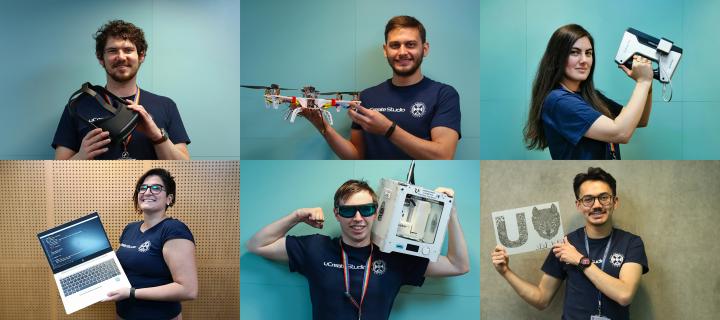
Winner of Outstanding Library Team at the Times Higher Education Awards 2020, the uCreate Studio in the University Main Library is a technology and creativity hub that’s making the world of 3D printing, laser scanning and virtual reality accessible to all.
From pilot to prized service
“When the opportunity came up to work on the University’s new makerspace pilot, I jumped at it,” says Mike Boyd, Makerspace Manager. “Initially it was a three-month project to test the appetite for such a service within the Main Library. Four years on, I’m delighted to still be here and with how the service has grown.”
An architecture graduate from the Glasgow School of Art, Mike started out as a freelance consultant specialising in 3D. His fascination with digital manufacture made the uCreate Studio at Edinburgh the ideal environment for his skills to thrive.
Since joining the makerspace in 2016, he says, “No two days have been the same.” His busy schedule is filled with offering advice to students, academics and teaching staff on how to use the free technologies in the studio, delivering workshops, making introductions to departments for collaboration opportunities, and supporting the team in helping build the digital and technological skills of the University community.
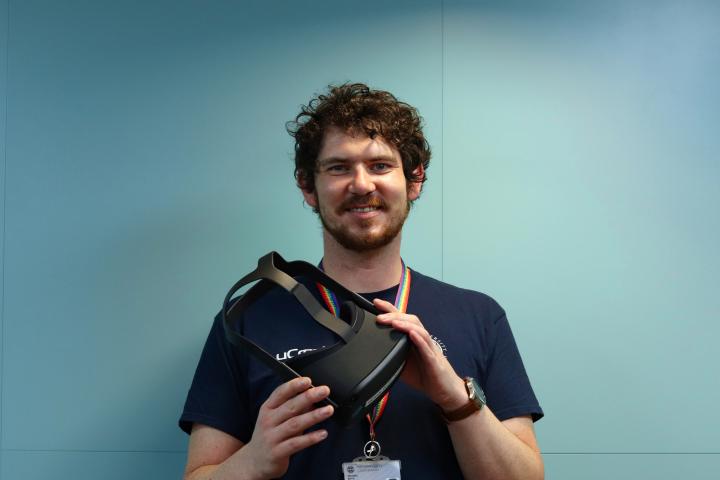
Making the virtual a reality
One of the sought-out technologies in the studio is the Oculus Quest, which Mike describes as “the first of a new generation of affordable Virtual Reality (VR) headsets that don’t need a high-end powerful PC to operate”. The studio has 26 of these available for free loan, which have been used across the University for everything from virtual exhibitions organised by students at Edinburgh College of Art to VR tournaments set up by the Table Tennis Society.
“VR as a technology is a real game changer with huge implications across a range of fields,” he goes on to explain. “Already used widely for training, such as medical, military and heavy engineering, it is seeing more and more use across industry and entertainment.”
The personal benefits of VR have recently been highlighted too, as Mike continues: “Especially during the pandemic, VR has shone as a tool to combat loneliness and isolation. The pain of being stuck at home for extended periods is softened a little when you can pop on a headset and enjoy lunch in the shade of the Eiffel Tower; play a game of Catan with people from across the world or watch a movie in a virtual cinema with your friends.”
Super-fast 3D printing
The studio has an impressive fleet of 21 3D printers, which are in high demand. Chemistry graduate and Makerspace Coordinator, Anthony Middleton, explains, for the uninitiated, how one of these pieces of kit works: “I’m holding the Ultimaker 2 GO, our smallest and most basic 3D printer. It heats up a roll of plastic to over 2000C which is then pushed through its 0.4mm nozzle. This nozzle is moving horizontally 0.1mm above the print bed and so flattens this plastic onto it in a layer. When the printer has finished a whole layer it moves up 0.1mm and deposits another layer – it repeats this process until you have your 3D print!”
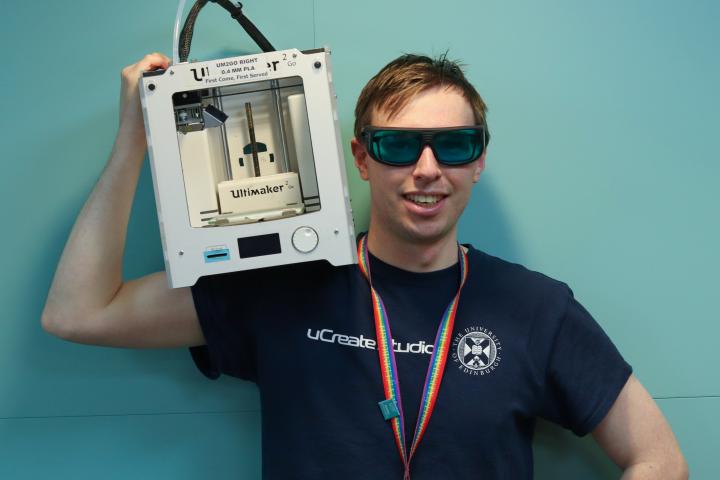
3D printing with restricted access
Before the pandemic, members of the University community regularly went into the studio to 3D print thousands of items – from full-sized turbine blades and bionic arms to drones and even skulls – for research, learning, teaching and, of course, fun.
Since Covid-19, the studio has adapted to maintain access, says Anthony: “We have had to limit it to users uploading their prints to our website, us printing them off, and users collecting the print from the studio. Even over the course of the pandemic we have done hundreds of prints, from electrical engineering and architectural course submissions, to parts for the Endeavour Rocket Society.”

Student start-up company Augment Bionics, began creating its affordable prosthetic limbs in the studio in its early days, and at the start of the pandemic turned its skills to creating visors for frontline healthcare workers, as did the uCreate team. “We and other groups in Edinburgh used 3D printings to produce several thousand on short notice for the NHS, as did many groups across the world,” says Anthony. “In general, the technology is allowing super-fast design and testing of lots of new things without having to have such a big investment in terms of cost or time for prototypes.”
A number of Student Technicians work alongside Mike and Anthony in the studio. Murat Çelik is a second-year PhD student in engineering who brings his interest in technology and gadgets to the team. “I’m a Student Technician and most of the time I’m dealing with 3D printers,” says Murat. “I help students if they face any technical issues with the printers, help them with their designs, try to fix problems with printers, give inductions to new users and give workshops on computer-aided design (CAD) software.”
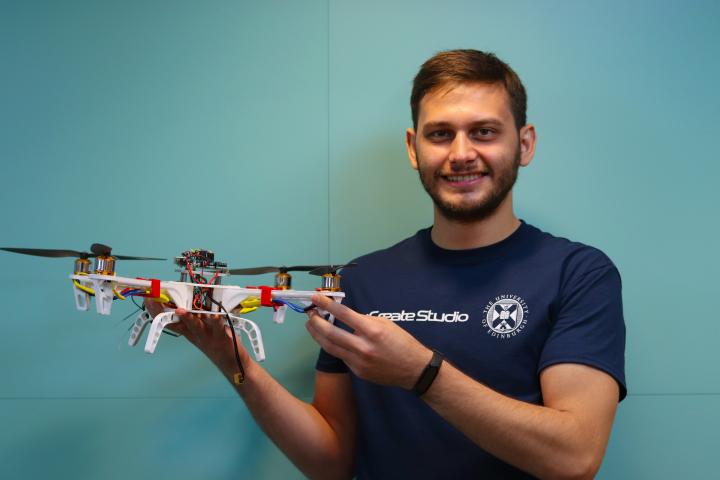
When asked about the object he’s holding, his reply reveals an innovative fusion of 3D printing and drone technology, inspired by human behaviour: “The drone I'm holding was designed, printed and assembled by one of our student members, Goudong Yang. It worked with a gestural control system he had put together, so he could ‘dance’ with it.” Some of his early experiments can be seen on the uCreate Twitter page.
Murat comes up with his own novel ways to demonstrate how 3D printing can be applied: “I 3D scanned myself with one of the studio’s scanners, and put a Baby Yoda model on my shoulder and then 3D printed it. My aim was to show students that they can combine uCreate Studio’s wide range of equipment in different fields and use them in their personal or academic projects.”
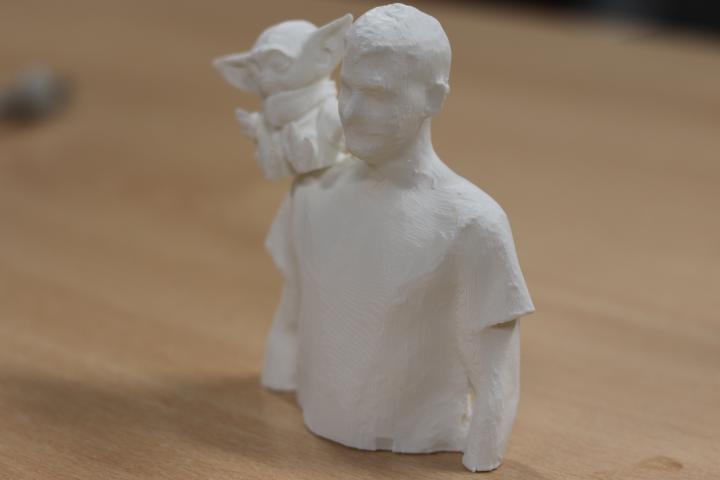
It all starts with a scanner
Scanning objects is a key part of the 3D-printing process. Leyla Deniz-Kiraz, is in her third year studying for a PhD in architecture and landscape architecture and is also a Student Technician in the uCreate Studio who specialises in 3D scanning.
She often uses the Einscan Pro which she describes as “a structured light scanner that can quickly capture a high-quality scan of physical objects, which can be turned into 3D-printed replicas”. At the University the scanner is used in research, teaching and learning and its uses extend to the wider world, as Leyla explains: “The 3D-scanning technology is important for analysis, and digital or physical reproduction of physical objects in a wide variety of fields like health industry, archaeology, architecture, engineering, etc.”
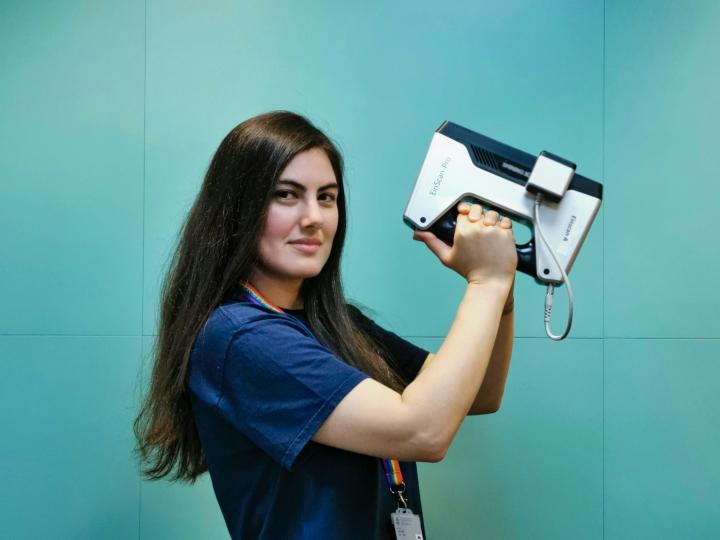
Leyla came across the uCreate Studio while wandering the University Main Library in her first year. When a role came up, she leaped at the chance and today guides studio users and gives inductions and online tutorials. The accessible and open aspect of the studio is what makes it a welcome resource for the tech-minded: “I believe it is very important for universities to make these kind of ‘available to everyone’ makerspaces possible because they provide a collaborative environment for users. Moreover, users can experience digital technologies and tools through making, which provides new possibilities for users to achieve further in their fields.”
Making the cut
Abdul Hakim Norazman, a Makerspace Technician who is in his fourth year studying electrical and mechanical engineering, echoes Leyla’s sentiments on makerspaces offering new possibilities. An element of his role that he particularly enjoys is helping members of the University community develop their creations.
“The most amazing thing about being a part of the uCreate Studio is meeting wonderful people and helping them to make interesting things,” says Hakim. “Throughout my time in the space, I have inducted an engineering team who wanted to 3D print parts for a micro wind turbine project, showed a start-up founder how to laser cut parts for a product launch, and taught graphic design to a neuroscience researcher. The sheer variety of things that happen in the makerspace make every day challenging and exciting.”

As well as being skilled with a 3D printer, Hakim also specialises in laser cutting. “The piece of kit that I am holding in the photo is an aluminium sheet which has an intricate design laser etched onto it,” he explains. “The design was created using Inkscape vector graphic design software and manufactured using the Full Spectrum Hobby Series CO2 laser cutter. The purpose of the item is to showcase the capabilities of the machine which can engrave (and cut) extremely fine details onto suitable material such as plywood, acrylic and anodised metals.”
The range of applications for laser cutting is vast. It can be used for anything from creating artistic metal posters right through to manufacturing metal parts at high tolerances for building aircraft in the aerospace industry.
A brave new digital world
While laser cutting, 3D scanning and printing, and VR technology offer opportunities to create things that seem out of this world, the team is keen not to forget the importance of everyday equipment. Student Evaluation Assistant Carine Abraham, a second-year PhD student in linguistics, is a non-technician, but her role is vital in making sure the studio supports its users as best it can.
“I lead projects that collect information on how the uCreate Studio users interact with the studio and what improvements they would like to see,” she explains. “Additionally, I work with the team to promote the studio to those who don’t know about us and collaborate on new ways we can support students and staff in every field.”
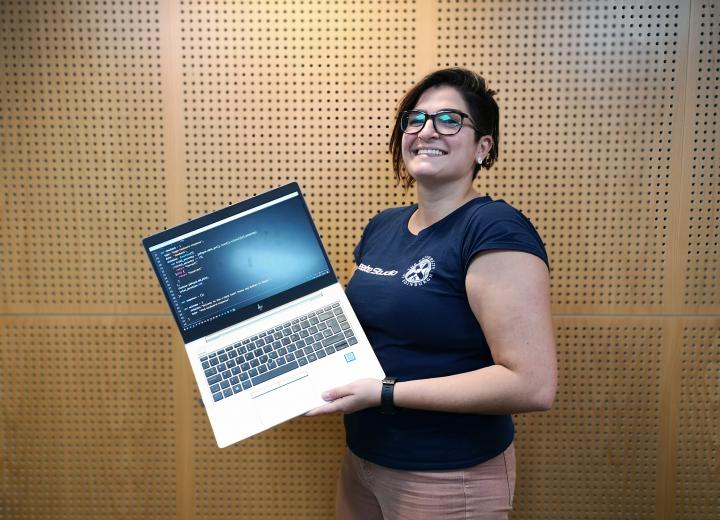
For Carine, her most treasured piece of kit is her ‘mighty laptop’ as she explains: “Data science revolves around numbers and I spend my days looking at what kind of users we have and who we can reach out to and support more. When creating reports for stakeholders, we always have our most heated arguments on whether pie charts are a valid graph to show data.”
Laptops aren’t only used for sourcing data to improve the user experience of the studio. They, along with other mobile devices and desktops, have become vital sharing and communication tools over the past year as the team has adapted its services in times of restricted access to the studio. “Especially since the start of the Covid-19 pandemic, working digitally has become the way we interact with most of our users, though we’re still open for physical student projects!,” says Carine. “We’ve trialled several online meeting platforms, a few in VR, for which felt the most interactive. Soon we’ll be running a University-wide survey on makerspaces, and we use laptops for our work socials.”
One thing that the pandemic hasn’t changed is the special nature of the uCreate Studio. Carine sums this up: “I’ve never worked with such an engaging, energetic, and caring group of individuals before. Each of us come from a range of backgrounds and have skills that support each other. Whether you’re in the studio or meeting someone on Zoom, the excitement from each staff member can easily compel anyone to feel at ease about their project and more positive about it.”
Where enthusiasm and ideas enhance learning
Kirsty Lingstadt, Head of Digital Library and Deputy Director of Library and University Collections, took the uCreate Studio under her wing in its fledgling days and today oversees the strategic direction of the service. Like Carine, she is full of praise for the team.
“They are all really enthusiastic, they love what they do and are constantly coming up with new ideas,” she says.

Kirsty is equally inspired by members of University community who use the studio: “The students are also brilliant. I am constantly in awe of how much they know and it’s great hearing where they are coming from and what they see as of interest – it helps me to understand some of the challenges they face much better and therefore also how we can support them.”
For Kirsty this kind of studio is a vital part of the learning experience at Edinburgh: “It allows students the opportunity to learn through actually doing. It’s this type of thinking, along with the collaboration, which helps us to refine everyone’s skills, making this an amazing space that in turn helps us continue to be a cutting-edge University.”
Meet more of the team
Silver Campbell, Makerspace Electronics Intern and fourth-year computer science student
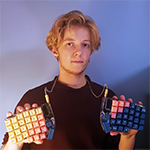
“I’m holding my keyboard! It’s a Lily58 Pro, which is a split ergonomic keyboard with an open-source design. I soldered and assembled it myself. The layout is customisable and it has little programmable OLED displays. I have been interested in all sorts of making – from handicrafts, to electronics, to moulding and casting – from a young age, so working in a makerspace is a wonderful opportunity.”
Sophie Powell-Hall, Marketing intern and final-year design and digital media student
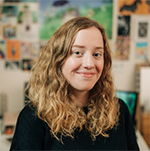
“I help promote all the activities happening at uCreate, and work behind the scenes on design and marketing content. I want to let people know about the huge range of resources available, and encourage anyone to come and give them a try. They can help inform so many incredible research and academic projects, or just be great fun and spark a new hobby.”
Jenny Long, Makerspace Champion and Edinburgh graduate

“For me, when I was a student, going to the uCreate Studio was a big part of my project – it's a place to explore outside of my own campus. The studio has a friendly environment, talking to peers about their ongoing projects can often give rise to new ideas.”
Dani Rothmann, Makerspace Champion and fourth-year fine art student
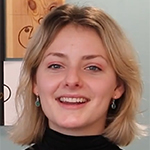
“My role involved connecting new students with the Makerspace, working out how uCreate could help them and bringing them together! This term I’ve been focusing on how ECA students could benefit from the array of tech accessible in uCreate.”
Irem Serefoglu, Student Technician and PhD student
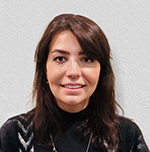
“Even remote working during Covid-19 restricted work time did not stop the team from working for the benefit of user support and transforming the services to cater to as many people as possible until we all get back to normal. As a result of all the hard work since the studio's opening, the Outstanding Library Team Award was given by the Times Higher Education this year.”
Find out more
Find out more about the uCreate Studio.
Read more Edit supplements.
Photos courtesy of the uCreate Studio.

